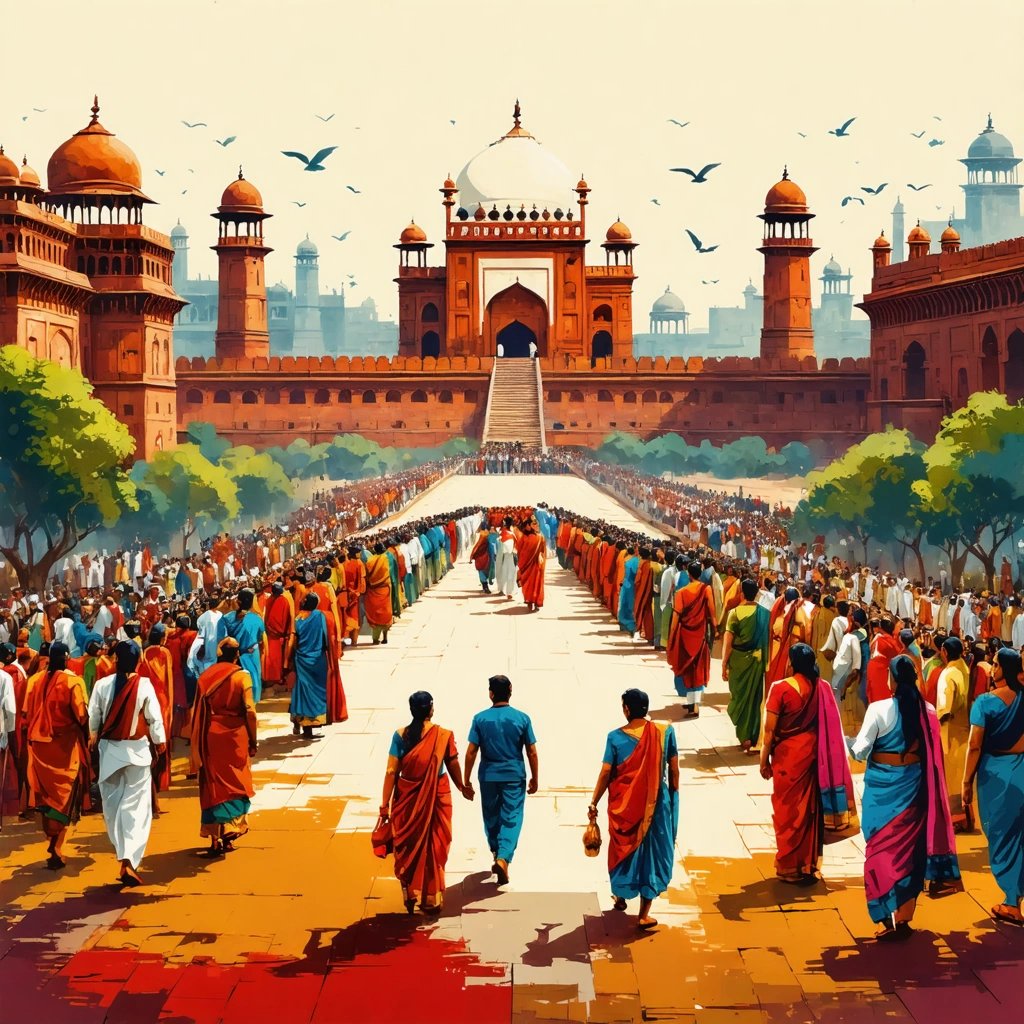Modern Indian Leaders: Delve into the lives of contemporary leaders shaping India in 2025.

Revisiting the Legacy: From Subhash Chandra Bose Ka Jeevan Parichay to Today’s Leadership
India’s leadership narrative is a fascinating saga that stretches from fiery revolutionaries of the past to dynamic visionaries steering the nation today. When we revisit the iconic Subhash Chandra Bose Ka Jeevan Parichay, we find not only the inspiring story of a freedom fighter but also a blueprint for courage and resilience that modern leaders still draw upon. Bose’s life was marked by relentless dedication to the country’s independence, a quality that contemporary Indian leaders strive to embody amid the complexities of the 21st century.
Yet, despite this rich heritage, the landscape of leadership in India is evolving at an unprecedented pace. The challenges are multifaceted—ranging from economic shifts and environmental crises to social equity and technological innovation. How do today’s leaders navigate these turbulent waters? And who are the key figures shaping the nation as we approach 2025?
Understanding the Challenges and the Faces Behind the Change
It’s easy to admire the grand narratives of history, but the real question is how modern Indian leaders are addressing the pressing issues of our time. For instance, Narendra Singh Tomar, with his extensive experience in agriculture and rural development, is a pivotal figure whose policies impact millions of farming communities. His journey is a testament to how leadership in India today involves a delicate balance of tradition and modernization.
Similarly, examining the background of emerging figures like Chirag Paswan reveals an interesting dimension to leadership: how education shapes political vision. Chirag Paswan’s education has equipped him with the tools to engage with India’s youth and tackle contemporary political challenges with fresh perspectives.
Why Does It Matter?
Leadership is not merely about holding office or making speeches; it’s about vision, action, and impact. The lives and work of leaders like Narendra Singh Tomar and Chirag Paswan demonstrate how informed decision-making and commitment can drive real change. By understanding their backgrounds, motivations, and strategies, we gain insight into what India’s future might look like.
What This Article Will Explore
In the sections ahead, we will:
- Trace the inspirational elements drawn from Subhash Chandra Bose Ka Jeevan Parichay that continue to influence Indian leadership culture.
- Analyze the contributions of Narendra Singh Tomar in shaping agricultural policies and rural development in India.
- Explore the role of education in molding political leaders through the lens of Chirag Paswan’s journey.
- Discuss the broader implications these leaders have on India’s socio-political and economic landscape as we move into 2025.
By weaving together stories of the past and profiles of the present, this article aims to offer a comprehensive understanding of the forces and personalities driving India’s progress. Whether you’re a student of politics, an aspiring leader, or simply curious about India’s evolving governance, the insights shared here will illuminate the pathways forward.
So, buckle up as we embark on this exploration of modern Indian leadership, where history meets innovation, and where visionaries craft the blueprint of a nation on the rise.

Modern Indian Leaders: Delving into the Lives of Contemporary Leaders Shaping India in 2025
Who are the prominent modern Indian leaders influencing India’s trajectory in 2025?
India’s leadership landscape in 2025 is marked by a diverse array of political figures, social activists, and visionaries who are shaping the country’s economic, social, and political future. These leaders come from different backgrounds, including grassroots politics, business, and reform movements. Their influence reflects India’s complex democracy and the aspirations of over 1.4 billion citizens.
Some key figures include Narendra Singh Tomar, a seasoned politician known for his work in agriculture and rural development; Chirag Paswan, a young leader combining political legacy with a focus on youth engagement and education; and a new generation of reformers inspired by historical icons like Subhash Chandra Bose, whose life and ideals continue to inspire leadership styles and nationalistic thought.
What is the significance of Subhash Chandra Bose Ka Jeevan Parichay in understanding modern Indian leadership?
Subhash Chandra Bose Ka Jeevan Parichay (Introduction to the life of Subhash Chandra Bose) remains crucial to understanding the ethos that drives many contemporary Indian leaders. Bose’s legacy as a freedom fighter and visionary leader who challenged colonial rule through assertive nationalism resonates deeply in modern political narratives.
His life story provides not only inspiration but also a framework for leadership that emphasizes courage, sacrifice, and a commitment to India’s sovereignty. Many modern leaders invoke Bose’s ideals to galvanize support for policies centered on self-reliance, national security, and inclusive development. Moreover, Bose’s emphasis on youth empowerment aligns with the ambitions of younger politicians like Chirag Paswan, who focus on education and youth participation in governance.
How has Narendra Singh Tomar contributed to India’s development in recent years?
Narendra Singh Tomar is a pivotal figure in India’s political landscape, especially known for his tenure as the Minister of Agriculture & Farmers Welfare. His contributions have been critical in shaping India’s agricultural policies, which affect the livelihoods of millions of farmers across the country.
Under his leadership, several reforms have aimed at improving agricultural productivity, introducing technology-driven solutions, and supporting sustainable farming practices. He has also played a role in implementing government schemes that provide financial aid and infrastructure support to rural areas, thus fostering inclusive growth.
Tomar’s work reflects a broader trend in Indian leadership that prioritizes rural development, food security, and the integration of traditional farming with modern techniques. This approach is vital for India, where agriculture employs a significant portion of the population and remains central to the economy.
What is Chirag Paswan’s educational background, and how does it influence his leadership style?
Chirag Paswan’s education has played a formative role in shaping his approach to politics and leadership. He holds a degree in engineering, which provides him with a technical and analytical perspective. This background is somewhat unique in Indian politics, where many leaders come from legal or political science fields.
Chirag Paswan Education has contributed to his focus on youth empowerment, innovation, and modernization of political strategies. His technical training allows him to advocate for educational reforms, digital literacy, and skill development programs that align with India’s growing digital economy.
Moreover, Chirag’s leadership is marked by a blend of legacy and modernity. He inherits a political legacy from his father, Ram Vilas Paswan, but seeks to modernize his party’s appeal by engaging younger demographics and emphasizing education-driven progress.
Why understanding the backgrounds of these leaders is essential for grasping India’s future direction?
Understanding the personal and professional backgrounds of leaders like Narendra Singh Tomar and Chirag Paswan, alongside the historical context of figures such as Subhash Chandra Bose, allows us to appreciate the multifaceted nature of India’s leadership in 2025. Their unique experiences and values influence policy-making, governance styles, and national priorities.
This knowledge helps citizens, researchers, and policymakers anticipate the country’s developmental trajectory, identify key areas of reform, and engage meaningfully with ongoing political discourse. It also highlights how historical legacies and modern education intersect to produce leadership that can navigate India’s complex social and economic challenges.
Key takeaways about modern Indian leaders shaping India in 2025
- Legacy and Inspiration: The life and ideals of Subhash Chandra Bose continue to inspire contemporary leadership, emphasizing nationalism and youth empowerment.
- Policy Impact: Leaders like Narendra Singh Tomar have a direct impact on sectors like agriculture, crucial for India's economy and rural welfare.
- Education and Innovation: Chirag Paswan’s technical education influences his progressive stance on youth engagement and modernization.
- Diverse Leadership Styles: Modern Indian leaders blend historical values with contemporary challenges, indicating a dynamic and evolving political environment.
Conclusion
The study of modern Indian leaders, through the lens of historical icons like Subhash Chandra Bose Ka Jeevan Parichay, and the active roles of politicians such as Narendra Singh Tomar and Chirag Paswan, reveals a rich tapestry of leadership that is shaping India’s future in 2025. Their diverse backgrounds and approaches underscore the complexity of governance in the world’s largest democracy and highlight the importance of legacy, education, and policy innovation in today’s political arena.



